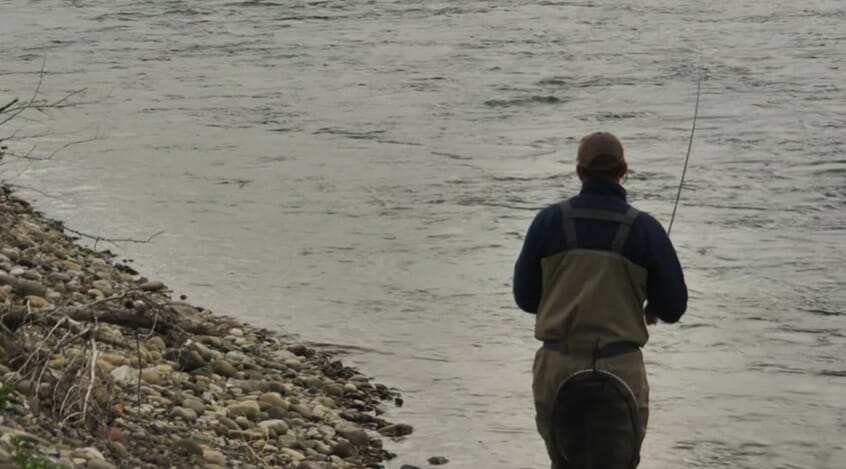Those long, featureless gravel runs that can be found on a lot of western rivers–and freestone rivers throughout the country–might often be trout “dead zones,” but as Orvis’ Dave Jensen points out in the video below, during hatches, these stretches of water can be very productive.
Otherwise nondescript habitat, these gravel shelves can be anywhere from a few inches to a few feet deep. Their softer current is what likely makes them appealing to adult insects (anything from caddis to stoneflies to mayflies) looking to deposit eggs in the water, and when hatches get to be prolific, the trout often throw caution to the wind in order to dine of floating bugs.
For trout, the “algebra” is pretty simple. The value of the food vs. the effort required to reach it makes good sense. It’s easy protein, and there’s often lots of it. And, despite being somewhat exposed, these shelves provide ready access to deeper, faster water where fish can escape danger.
As Dave points out in the video, fish on these shelves can be very wary, so taking caution to use the most delicate presentations possible is important. I would add that, just because the water might be shallow enough to wade doesn’t mean you should–casting from the bank to avoid disturbing or alarming fish would be my first choice in a situation like the one depicted in the film.
These often-overlooked stretches of trout water are avoided for a reason–they don’t hold fish all the time. They generally only see trout when insects are taking advantage of the slower currents. Keep your eyes open for adult bugs on the surface, and watch for birds, like swallows, that will chase the bugs right on the surface of the river. This is when you know dinner is served, and trout might be looking up in these otherwise barren stretches of river.



